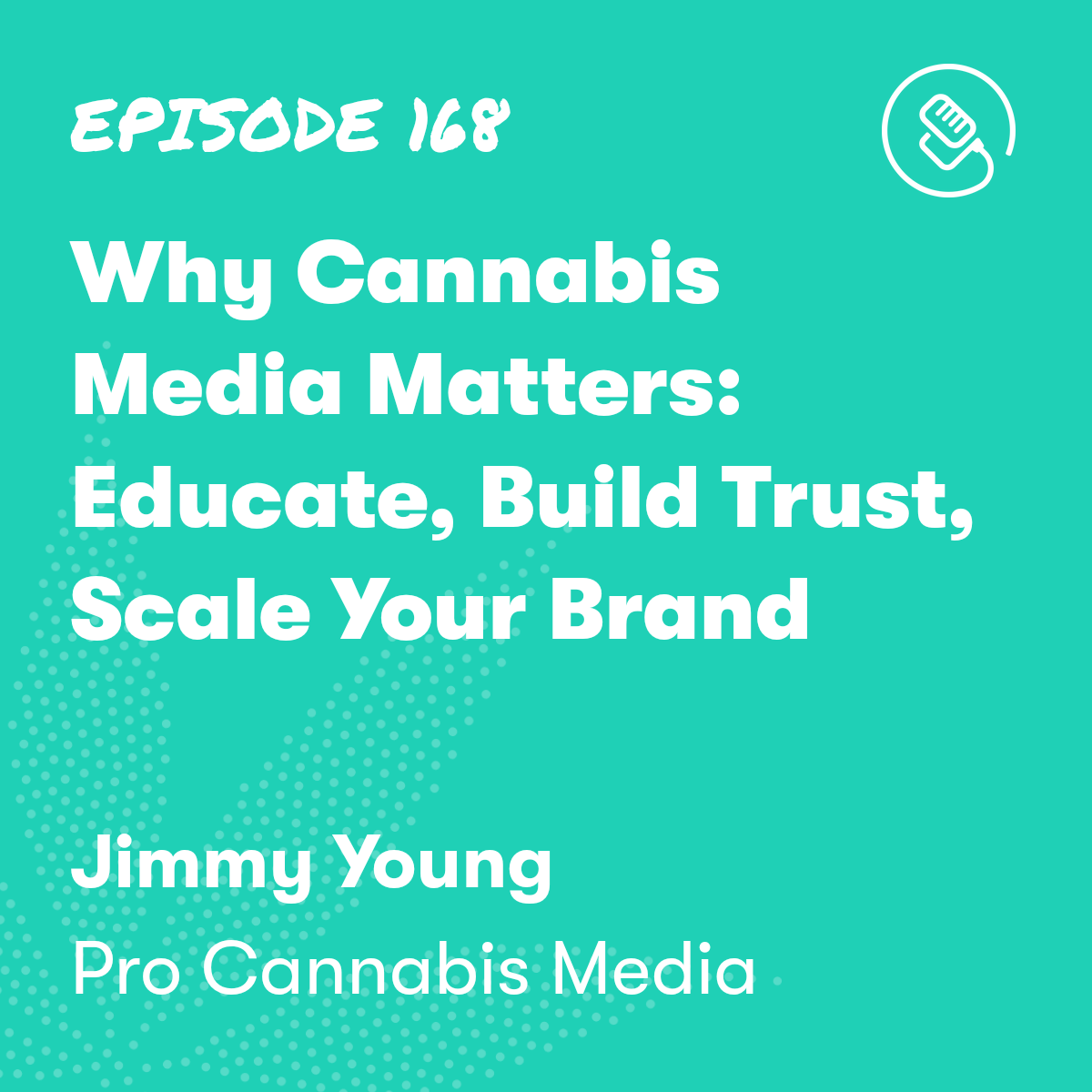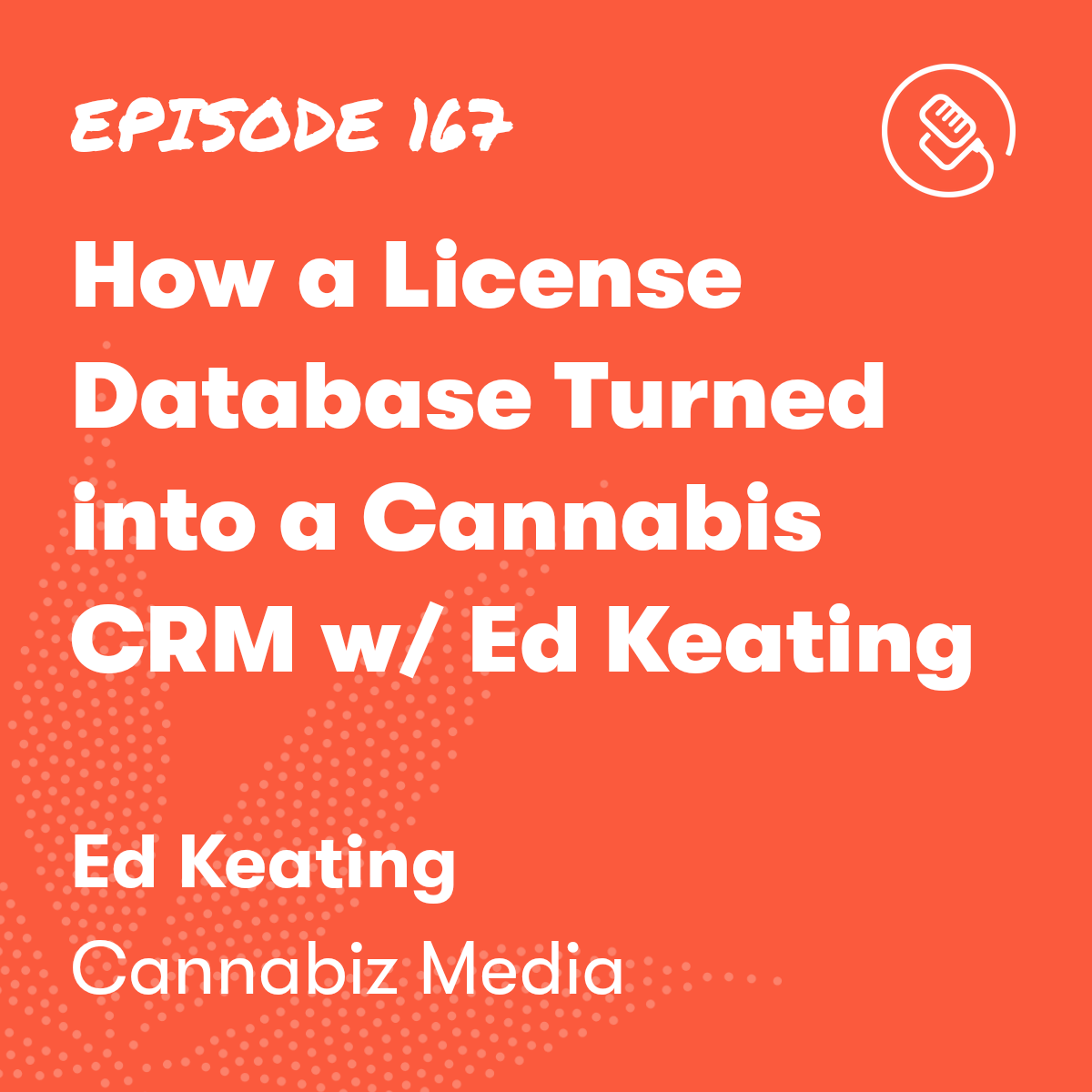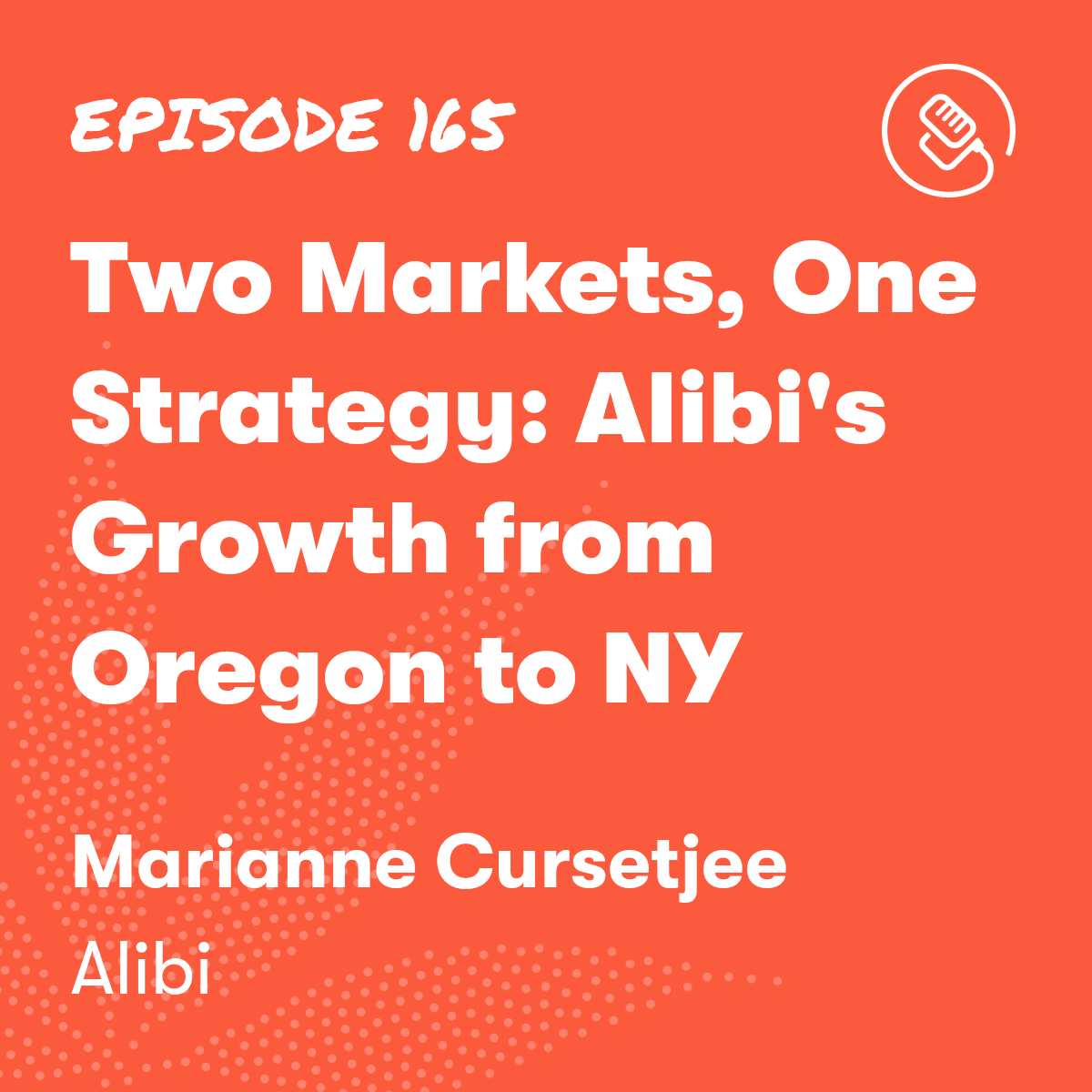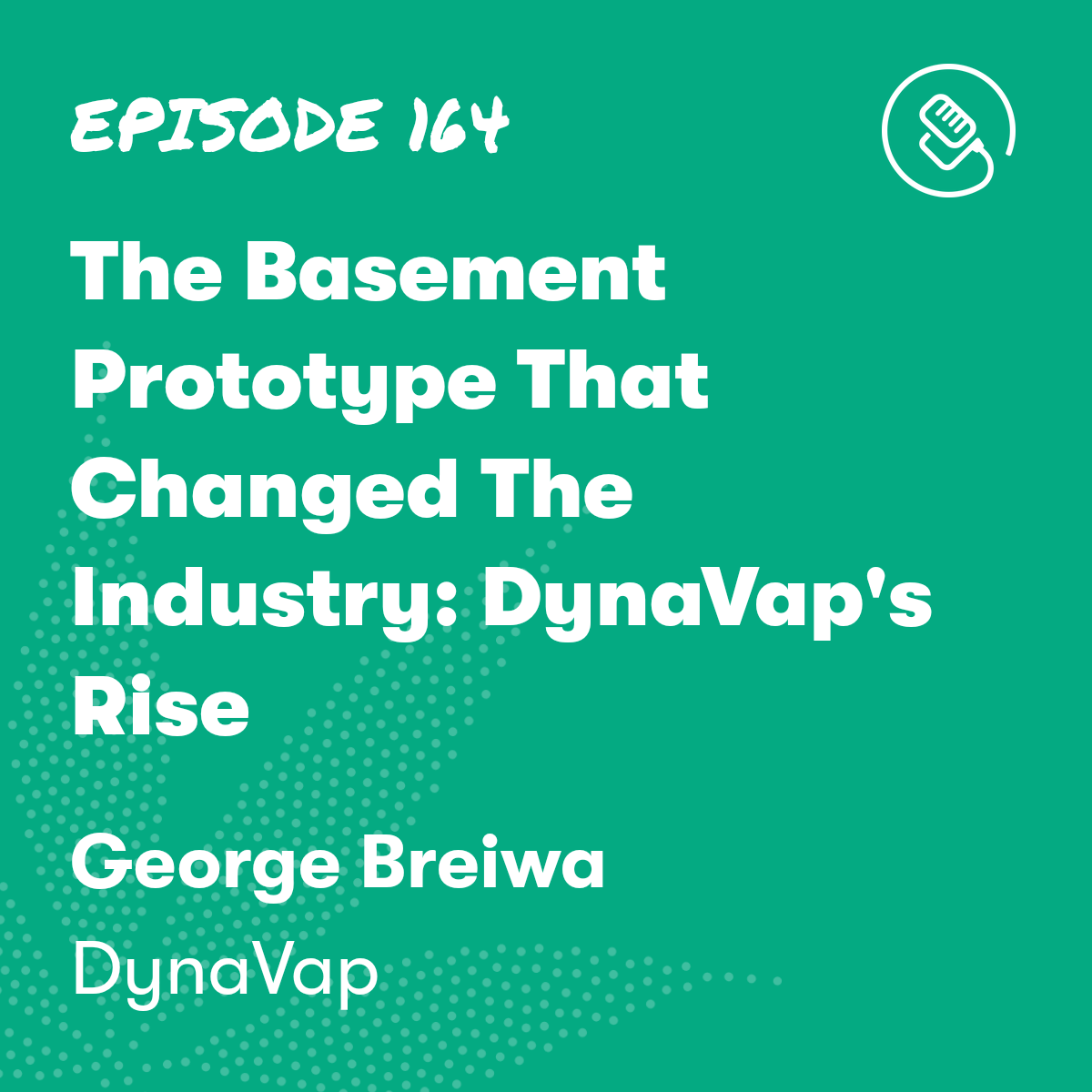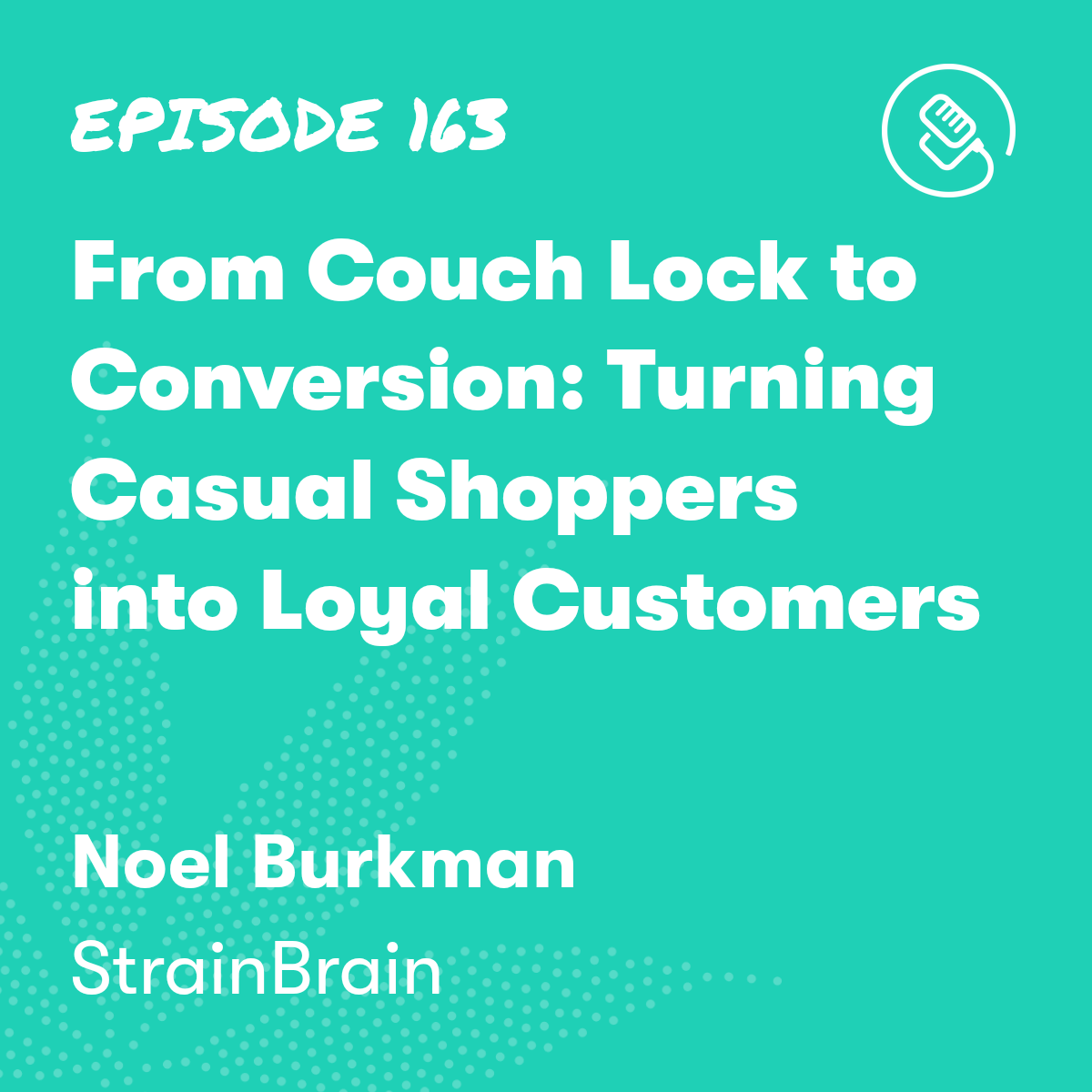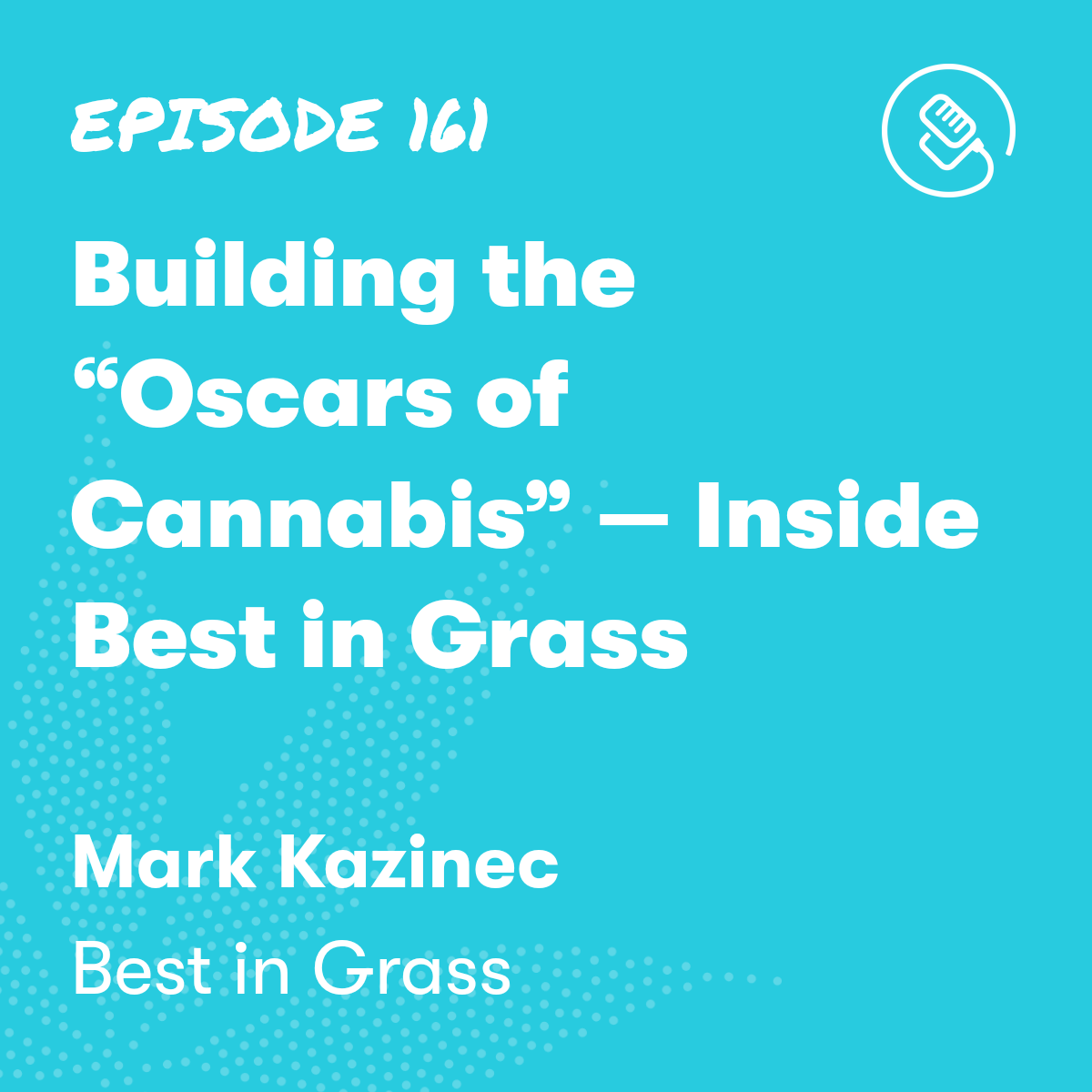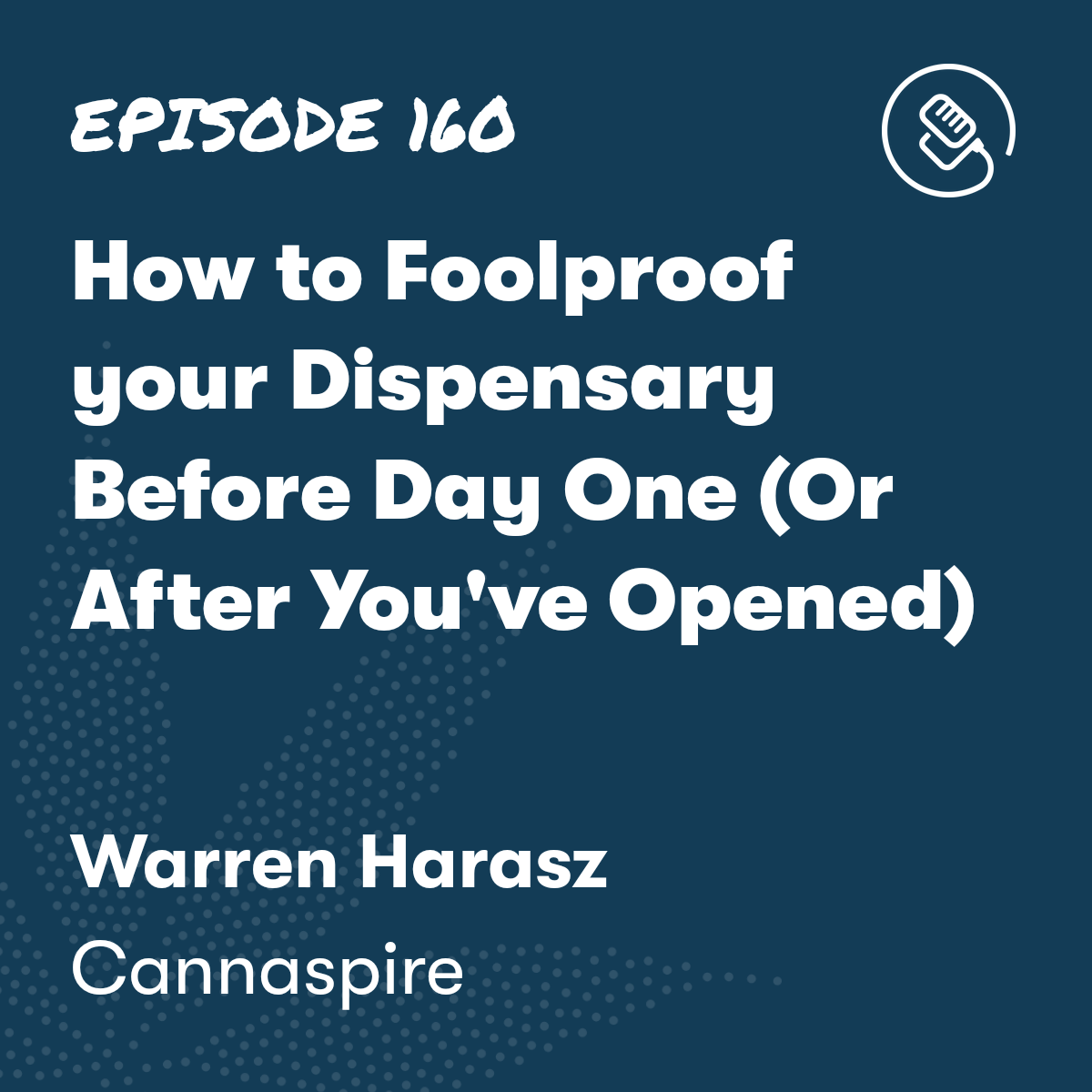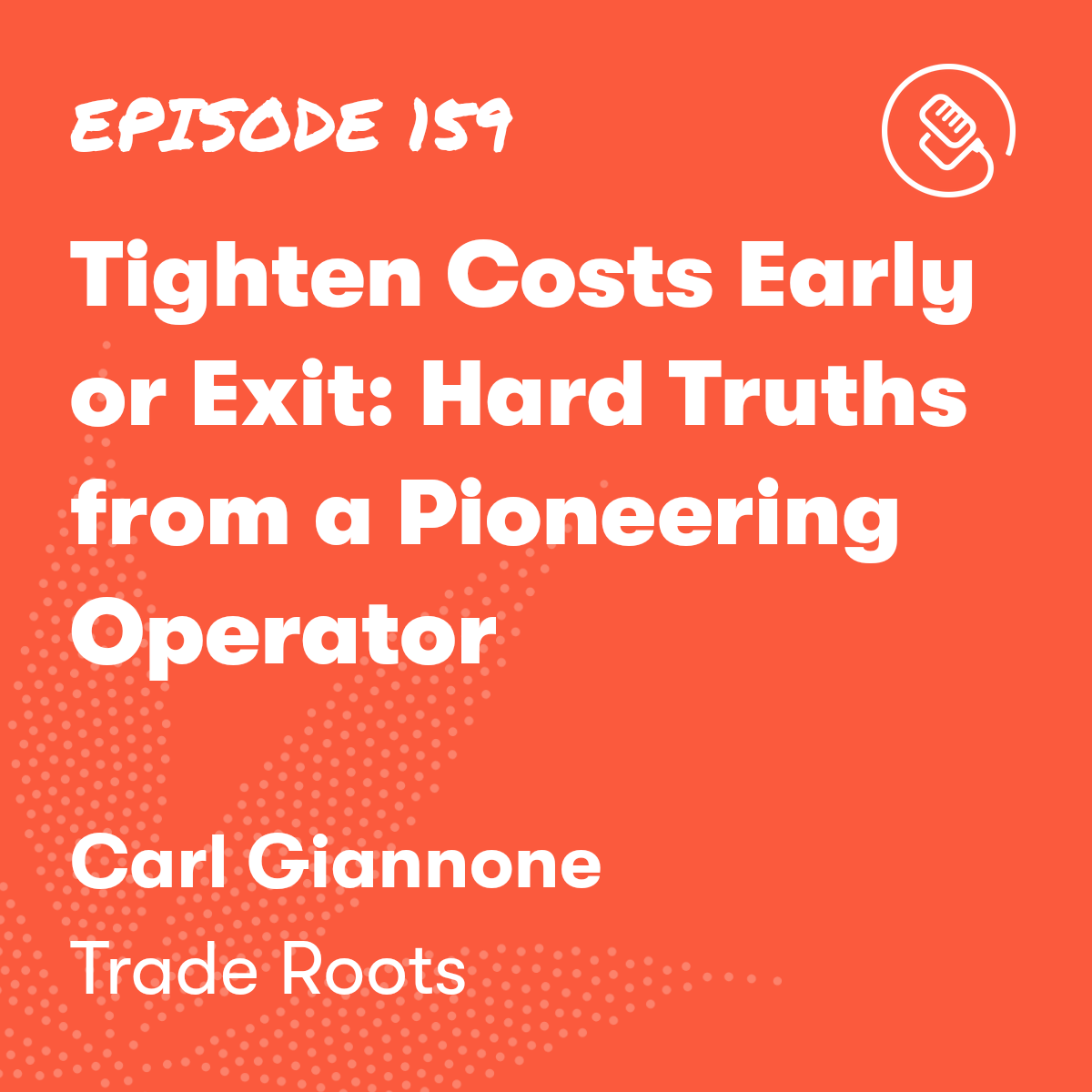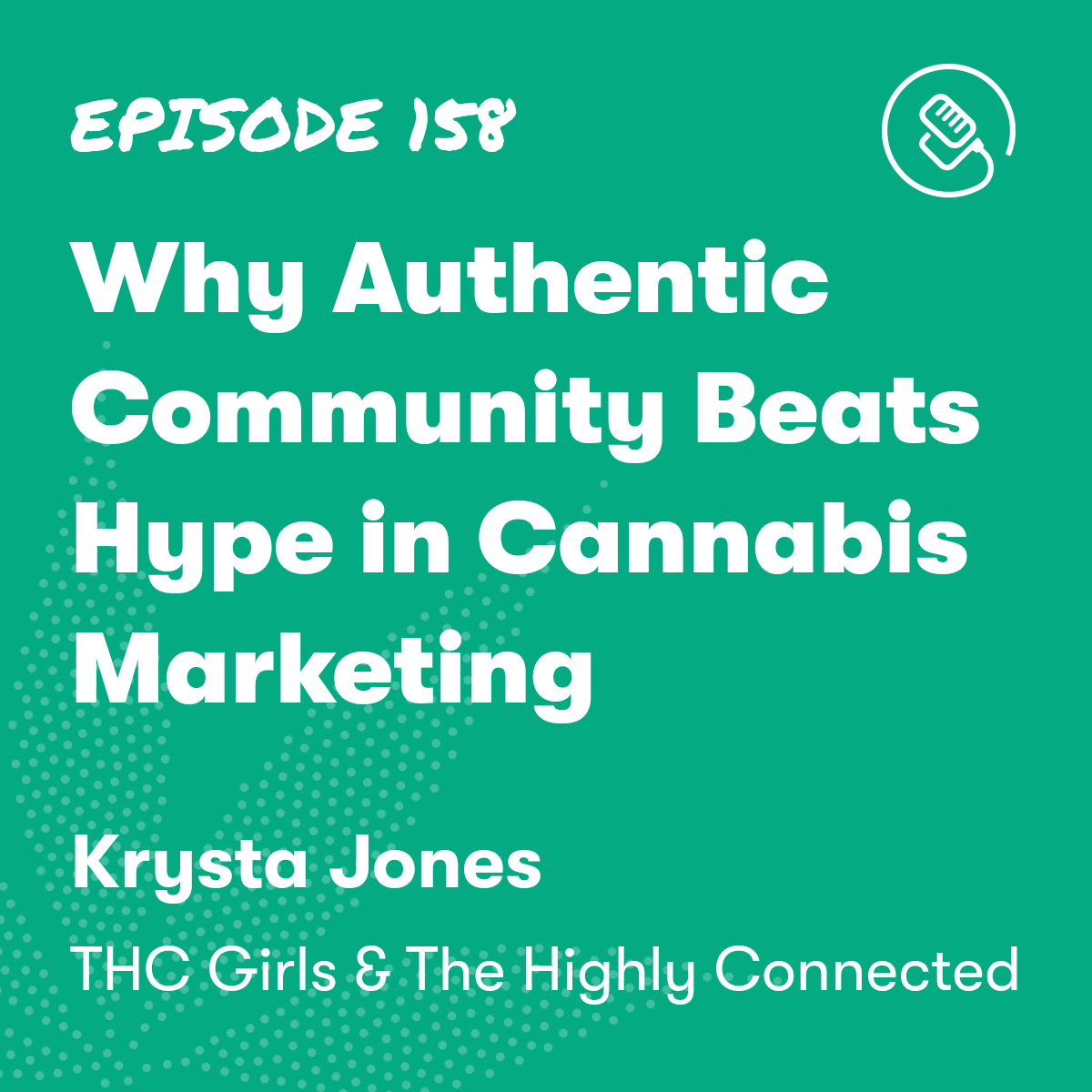

What NY Cannabis Will Look Like in 2025
Episode Description

Episode Transcript
Tommy: [00:00:00] What's happening in New York? A lot. Pending leadership changes, policing the illicit market. Now that padlocks are unconstitutional. ROs and the election that just happened. Joining us today is Katie Neer from KND Group. Katie and KND have been helping cannabis businesses shape policy through their work with regulators.
We talked about the market. And the policies that they're pushing on behalf of their clients. It was a great conversation. I hope you guys enjoy.
Intro: Welcome to the KayaCast, the podcast for cannabis businesses looking to launch, grow, and scale their operations.
Tommy: Katie, thank you so much for joining us today.
Katie Neer: Thanks for having me. I'm super excited to be here, Tommy.
Tommy: So padlocks apparently is unconstitutional. Where do we go from here?
Katie Neer: Oh, God, I don't know. To some extent, back to the drawing board, I think, um, this is just the illicit pop up market is like the issue [00:01:00] that won't go away in New York, and it's complicated. I think it sounds complicated. It's simple, it feels simple, it even looks simple. Like when you're walking around in Manhattan and in New York City and you see, you know, kind of like, in my opinion, tacky, obnoxious, you know, neon green pot leaves everywhere, like weed world or whatever they're called.
Like, to me, as someone in the industry, that's obviously not a licensed store. But, for an everyday consumer that doesn't live and breathe these regs, and these rules, and these laws, they don't know that, right? Like, they know that New York legalized and decriminalized drugs. You know three years ago nearly four years ago, and they're like, oh cool.
That's a dispensary, you know, so they go in it Which makes those illicit shops really [00:02:00] lucrative and a really successful business Which is hard then to kind of shut it down and snuff them out And you also don't want to you know, you don't want to recriminalize purchasing, consuming, selling marijuana. Uh, and I think a lot of the people with the power to enforce the rules are very confused about what the rules are and the consumers are confused about what's licensed and what's not and so You know, we just have this, we have like utter chaos in New York state still.
Tommy: Yeah, I was just really think if you think about it if it's unconstitutional then could the illegal shops of the illicit shops That were closed down come after the city for for closing them down to do something. That's illegal
Katie Neer: So I think there's some, I don't think so. I think there's some nuance. And so there's, uh, there's kind of two [00:03:00] buckets. There's probably more than two buckets, but to try to simplify the illicit market problem, I think of it as two buckets. You've got storefronts that are selling, selling weed, right. Selling illicit cannabis and the definition of illicit cannabis here in New York.
Is adult use cannabis that, that would otherwise be taxed and regulated. And, and that's all they're selling. And that's pretty clear cut. Right. And I think the, the newer enforcement laws, both at the state level and at the local level of New York city and the implementing regulations at the office, clearly contemplate that scenario.
And anyone who's gotten padlocked and shot, like shut down and fined, Operating in that capacity will remain shut down or will owe those fines and I also think that the state can continue to go after those bad actors. [00:04:00] I think you then have a more complicated bucket of businesses that have some sort of legitimate cannabis license.
Whether that's it, I think it's not an adult use cannabis license, right? I think that it's a hemp retail license in many instances. Um, they may also have a lottery license. They may also have. Um, uh, something from the SLA where they're selling beer, right? And, they've got legitimate tax certificates with the Department of Tax and Finance.
And so, they are a legitimate business, but one component of what's going on in their storefront is illicit. And that's tricky. You can't just Walk in there and shut that business down and padlock that business. They do have due process rights. And so I think that's where this issue is getting conflated and where shutting down those businesses is a little trickier.
And those business owners do have [00:05:00] some rights and there needs to be proper procedure followed. You can't just. Walk up and padlock that store. And I think that was my takeaway, big takeaway from that decision. And again, that decision was focused on the New York city. So the local law, which happened at the same time, the state enacted the state enforcement laws, but that state enforcement law stands.
And so, so long as all these various state agencies. are coordinating, using their authority appropriately, giving the operator due process. I think they can still have a crackdown on that illicit component. Um, they can also go after all those other licenses, but you can't just do it instantly. You do have to go through an administrative process.
Tommy: That makes sense. That makes total sense to me. And I feel that in the long term, we do have to have laws in place and we do have to abide by [00:06:00] those laws. With this hurdle, do you see a slowdown in the state's policing of the illicit market?
Katie Neer: Probably, unfortunately, because the state, the reality is the state just can't do this alone. They do have to partner and coordinate with local law enforcement and localities and a lot of other state agencies. And so right now I, I'm presuming, I don't know, but I'm presuming the coordination and the task force that existed between the state and New York City to do Operation Padlock.
I think that's what they were calling it. I think that's probably a little up in the air. They're probably having a lot of meetings, huddling up and figuring out what they can and what they cannot do and sort of what comes next, whether that's an appeal to that court decision or, you know, we are headed into another legislative session in January.
So I think At a minimum, I expect that they'll be kind of going back to the drawing [00:07:00] board and thinking, how can we tweak these laws? How can we strengthen them? Um, and how can we get this? Right? Uh, because at the end of the day, if the state's goal is to have a robust and competitive and diverse regulated marketplace, they've got to find a way to start to close down the unregulated marketplace.
Or it just won't,
you know, the vision will never realize.
Tommy: Yeah, and I read somewhere that in New York, uh, post two years, the legal cannabis market can be worth about six billion dollars, which is a lot and growing.
Katie Neer: It is. And it's, it's, it's frustrating. So there's just these bigger ticket items that I think politicians like to focus on, um, and view from a political lens where they're like, Oh, if I'm, if I'm paying attention, [00:08:00] transportation, if I'm paying attention to, um, education or healthcare, that's, what's going to make me be seen as serious and legitimate and sort of get ahead in my own career or own ambitions.
And I wish that, uh, you know, a top decision maker. Would look at the cannabis industry as an emerging industry and take it seriously and get to know it and dive in. And I wish someone would get as excited about it as I am, you know, like it's just, and we don't have that in New York, to be honest, we just don't, we've got fantastic people, who work at the OCM and serve on the cannabis control board.
We have fantastic staff in the governor's office who pay attention to this. day in and day out, but we do not have a strong leader, you know, within that executive branch that's paying attention and making decisions.
Tommy: Speaking of the OCM, there's a looming leadership change. Any updates on that?
Katie Neer: I don't have any updates on that. I think, and I'm just speculating, [00:09:00] I think that we'll see appointments made after election day. I think everyone is, is understandably kind of heads down focused on this election next week. So coming out of that sort of flurry of news, I think we'll see some appointments for OCM, maybe CCB.
I think there could be further potential changes on that board level. Um, if I was guessing, I would guess that the, the acting executive director, Phylicia Reed. Could, could have that job, could have that appointment as permanent executive director if she wants it. So, at the end of the day, I think she's a critical partner and decision maker in, in choosing if, if she wants to take that on or not.
Tommy: Has she or the OCM talked about any policy change ideas, things of that nature moving forward?
Katie Neer: So they're, they're, given the, the legislative calendar, kind of the policymaking calendar, if you [00:10:00] will, here in New York. Which really kicks off in January with the Governor's State of the State address and then her proposal for an executive budget. Kind of working backwards from those, that timeline, that means right now, like as you and I are talking.
The agencies, including OCM and with their CCB members are huddling and having these policy conversations and thinking through, okay, what's working, what's not working, what's the feedback we're getting from stakeholders, what should we focus our attention on in 2025 to change or improve, and that's going on right now, I don't know exactly where their heads are headed.
What I can say is I represent all kinds of stakeholders, um, with all kinds of opinions and hopes and dreams for policy changes. And OCM is nothing but accessible and open minded when I'm trying to persuade them and do my job to convince [00:11:00] them that my client's priority should be their priority. So I don't know where, where we'll land, but what I think I would like to see, um, is definitely some refinement on the illicit market issue or continued effort on the illicit market effort.
I think one thing they could consider. Is codifying a private right of action. So in other words, your licensees, your existing licensees, could bring actions against illicit operators and shut them down and potentially collect significant damages. I think that would motivate a lot of litigators to get involved because there could be.
You're spending a lot of money and time to comply within the rules and stay within the guardrails, [00:12:00] and you do expect your competitors are doing the same. That's what makes a marketplace fair and truly competitive. And so I, I say empower those licensees to go ahead and take out their peers that aren't doing the same.
I think that would be more effective. Then the government trying to figure this out because it is complicated. Um, but a private right of action could be a very simple approach. Uh, I'd also love to see them focus on the medical cannabis program. The medical cannabis program here in New York is very weak.
It's very small. It's very conservative. It's very strict. Uh, we do hold ourselves out there as one of the more progressive states in the country, but that just. Is not the truth when it comes to looking at the policies and the medical program. And I think that's something OCM is thinking about and talking about and working on.
There's some really low hanging fruit [00:13:00] changes there, such as. Eliminating the tax on medical, products, which. Every other state that has a medical program and then turns on adult use does, they usually do it at the outset. We're a little behind on that front, but I think that all the more reason to get it done and get it done quickly.
Another low hanging fruit policy would be out of state reciprocity for patients. So we've got a huge commuter population here in New York state. And we have a ton of students. And so my worldview is if you are a medical patient in your home state, but you're coming into New York for, to work or to go to school, you should be able to go into a dispensary here in New York and get your medicine. And I think those two things are really the hanging fruit. And there's a lot of bigger ideas that they could consider to kind of save the medical program. But I do hope the medical program is a focus.
And last but not least is not legislative. It's, it's a regulatory thing. I think the regulator does need to take a look at the [00:14:00] regs that they have adopted and really loosen them up, or take a look at each thing that they put on the license holders and say, what's the burden to the license holder? What's it cost them to comply with this? And what's our policy goal? And. And kind of do a realignment, if you will, with the rules, because the rules. Again, we're in a, we are supposedly in a progressive state. The rules are really conservative. They are the strictest adult use cannabis regulations in the country.
And we're supposed to have, you know, the biggest market, the most exciting market. It's kind of like, all right, well, let's have the work product reflect that. And let's let our licensees Get creative and run a profitable business.
Tommy: I agree with you. I completely agree with you, particularly the rules in relation to promotions, etc. It's, you know, you're putting handcuffs on businesses.
Katie Neer: Yeah. And, and it's a direct [00:15:00] impact to the consumer because every cost you put on a business flows to the consumer. That's just how this works. It's just not, it's not rocket science, right? So we know cannabis consumers are price sensitive. That is well established. We are competing with an illicit market here in New York that is an untaxed, unregulated.
Market. There's both that kind of in your face illicit kind of brick and mortar retail market that I'm talking about. When I say illicit, we also have a legacy market that's existed in New York for way longer than I've been alive. Right. And it's high quality, it's affordable, and it's also very sophisticated.
And one of the main policy goals is trying to convert those operators in the legacy market and those consumers of the legacy market over into these regulated channels. We got to make a, we got to make a pitch, right? Like in what world is a legacy operator [00:16:00] who's, you know, like operating in cash with none of this kind of overhead, none of this regulatory compliance costs.
None of these taxes, we have to make it worth it for them to come get a license and do this in the regulated channel. And I just don't think that was front of mind when the first version of these regs got adopted. And I think the new players at OCM are aware of that and are sitting down and looking at the regs with that perspective.
And kind of centering the consumer. Um, because if your consumer's needs are being met, then your marketplace will come. It will develop and it will be successful.
Tommy: Yeah, it's the unfortunate reality is there will always be a grey market, and the more you handcuff the legal market, there's a competition imbalance, really.
Katie Neer: Exactly.
So, you know, that's what I think they'll do in [00:17:00] 2025. But like, they're also, they also got to staff up, train, you know, Figure out the personnel changes and transitions and that takes time. Uh,
Tommy: Katie, what are the state of ROs in New York?
Katie Neer: the ROs, I love them. They are, uh, they are my clients. I give that, I'll give that disclaimer. I've also worked in house at one of them. And at the end of the day, they're kind of what brought me into this space professionally, right? I can, from a personal perspective, I've, I've long been a consumer and a fan.
But they really provided me my opportunity to get into this professionally. And they are really not beloved in New York and that there's a lot of history there. There's a lot of reasons for that. And some of that's fair, and some of it's not fair, uh, and I, you know, I try to be very direct about that, right, and recognize it, but right now the state of the ROs in [00:18:00] York is not pretty.
So, you know, it's, it's, I've been spending a lot of time lately kind of working with them, but also looking at the data. So if we rewind to the beginning, and I'll try to keep this story concise, but if we rewind back to like, let's say, I'll start us in like 2017, 2018. Everyone's advocating to legalize and decriminalize.
For adult use, we have a medical program. So we have 10 operating registered organizations or ROs as they're called. So they're part of that advocacy as well. And what they want is when there's an adult use law, they want the ability to participate in it and participate vertically integrated. Because they were mandated by the state to be vertically integrated in the medical program, which is super expensive.
It's an extraordinarily capital intensive way of doing [00:19:00] business in the space.
Tommy: Look at Florida, right?
Katie Neer: And so they were like, okay, the state made us make this investment. Right. And we know from watching other states that when you turn on adult use, after you have a medical program, your medical program takes a hit and that's, that's That's to be expected.
It's logical. It makes sense from a policy perspective. And so to survive and keep a medical program available and sustainable, we, you know, the ROs want to be able to be in adult use and we want to be there vertically integrated because you, the state, mandated us to set up this way. So that was their position.
That was not the worldview or the position of the governor's office at that time, or the legislative champions of this bill, Senator Krueger and Majority Leader People Stokes. They didn't want the ROs to participate in the adult use market. So there was a lot of work and a lot of advocacy that needed to be done with [00:20:00] all kinds of stakeholders in order to get comfort around, you a deal, you know, a piece of legislation that would allow them in the adult use market.
And that, that took a long time and a lot of work, but it, but it worked. And so eventually the state enacts what we all call the MRTA, which is now the cannabis law. The cannabis law contemplates, it doesn't, it doesn't grandfather anyone in, it's not automatic, but it contemplates that an RO can transition into adult use It provides two choices for that company.
One is to transition into adult use and be a supplier only. The other choice is to transition in and be vertically integrated and co locate adult use product at three medical dispensaries. And if you choose that path, that vertically integrated path, the law mandates that you pay a special one time, a one time special licensing fee.
And the law [00:21:00] states that that fee be adequate to fund social and economic equity, but ultimately determined by the board. So we expected a very big fee, like a very big fee, because New York is a big market, and that is a very unique privilege for these companies to be vertically integrated in adult youth.
And the vision, when this law was enacted, was that we would be moving quickly, that the and an application for independent new retail only licenses would open up at the same time and the program would launch and that the ROs would pay a huge fee for that privilege and then that fee would get used by the state to fund those social and economic equity programs which the law mandates must include Incubator assistance, um, low or no interest loans or grants to social, basically social [00:22:00] equity qualified businesses.
And so the entire kind of beauty of the MRTA. It was that you would have funding at the state level for the social equity programming on day one of launching this program, which is like, if you go talk to any other state, how to go with your adult use rollout, well, we only really have big corporations here.
We only have white owned corporations. You know, big MSOs here. Oh, really? What was the issue with getting small and mid sized, diversely owned players up and running in a, in a competitive way in your state? The answer without fail, a hundred percent of the time is a lack of funding, uh, challenges with access to capital, whether that's in the private capital, private equity markets, or the state had no state had figured out how to facilitate or solve that problem for social equity businesses.
The MRTA had the proposed solution. Great. [00:23:00] Great law, still is a great law to this day. I think it's the best law, like, implementing law in the country. Where things Went way off the rails is with the, with the regulator implementing the law as drafted and so, you know, reasonable people are going to disagree on the story from that point on, um, and everyone's going to have a different world view and perspective of what happened and who to blame.
I will say that the regs were not moving in a direction that was good for the ROs, and so some of them did bring a lawsuit on a number of other issues with the rollout, and that did give them leverage and ultimately that was settled and that that did answer how, like, the timing And the how they would transition into adult use.
And I think anyone who was involved in that, that effort feels like they won any, any RO that was involved in that effort. It feels like they [00:24:00] won. I think anyone who was working for the regulator at that time that that happened. feels that all of the delays in the rollout, all of the challenges were solely because of that litigation and the, and the suck on resources that it took.
And so two things can be true at once. Like who knows, you know, everyone has their own worldview. The point is that now we're in a situation where we're past that. The ROs have transitioned into adult use. And like, I think it's interesting to say, okay, which ones of them chose the vertically integrated path?
Which one of them chose the supply side path? And what's happening to those companies that are in either bucket? And why did they choose the path they chose? And that's where I've been spending a lot of time and a lot of effort in, in my lobbying efforts, because you've only got four out of 10 companies that were able to choose the vertically [00:25:00] integrated path.
And pay the special licensing fee, which is 20 million, which maybe that would have made sense in 2021, right? Even 2022, but in 2024, when you've got anywhere from three to 8, 000 illicit operators, operating tax free, regulation free. The market just isn't what it was. So they can't, they just can't afford it.
They can't pay it. And so you've got four who did figure that out and pay it, but you've got six who didn't. Of those six who didn't, one straight up forfeited the license. Like, they're just gone. They don't exist anymore. The other five, You know, they're, they are regrouping and they're making business decisions and reprioritizing their resources and what states they see a future and an opportunity in.
And generally speaking, they do not see that opportunity in New York. And [00:26:00] what that means is they are closing medical dispensaries because they're not sustainable. They're, they're bleeding money, which means jobs are being laid off. Um, or they're divesting. They're trying to sell the license or do a change in composition.
And none of that's good, right? Like if the, if the point of the special licensing fee was truly to get money in the state to fund social equity, it's not an effective fee. The number isn't the right number. And so I think it's time to get back to the table and talk about that. Um, but that's a very thorny issue, as you can imagine.
There's. Political issues there, there's substantive issues there. It's, it's not an easy issue.
Tommy: No, to ask a business to pay 20 million today is, it's a huge investment for in the short term, you're just going to lose money. That's, that's essentially what it is. And you're taking a bet five, six years down the road, where the market [00:27:00] goes.
Katie Neer: And we just, and I think it's fair when a company sits there and says, I don't have the clarity I need. To go get the financing I need to pay that fee. And I think a big part of that's the illicit market. That's just a big unknown. It's a big risk to make a, make an investment in New York right now. I think the other one is there's a lot, the numbers look good for the regulated market.
So if you tune in to a CCB meeting and you watch their market overview, um, briefings, or you look at the decks, the numbers look good. There's a lot of reasons to be optimistic about New York. But then when you talk, when I talk to my clients and you talk to the stakeholders licensed in New York, there's something going on, right?
Like there's a gap in what they're experiencing, the revenue that they're making. versus the numbers that the state's reporting. And I think what that means, and I don't want to be a conspiracy theorist, but I think that means there's [00:28:00] an inversion issue. So basically some, somewhere in the supply chain, out of state product is getting funneled in and ultimately being sold as regulated product at retail.
And so it's taxed. And it's coming out of a regulated dispensary, but it didn't get grown by a licensed cultivator. And there's something going on there. That's a problem. And I, I hope the regulator focuses on that cause they should easily be able to figure that out and crack down on that. But that's the other kind of uncertainty or business risk that's really making it difficult for some of these ROs to see that silver lining in New York.
Tommy: Any large brands come in? If I was an RL, I'd be like, hey, come on, Cookies, come in here.
Let's join the party.
Katie Neer: yeah. I think there was a world in which that would have been the pitch, right? Like, Hey, come buy our license or do a JV. We've got a vertically [00:29:00] integrated shop ready to go. We just need like a cash infusion. Basically. It's just not that simple anymore because those, those companies have so many other ways to get in New York now that are way more affordable and
Yeah.
and like less intense.
Uh, because if you're gonna do anything in the RO space, there's like a, there's a unique set of rules. So there's kind of these true party of interest rules. And overall rules for everyone, right? On this marketplace, which is in its simplest way, you can be a retailer or you can be a supplier, but you can't be both, right?
If you're in the RO world, if you will, those rules are, those rules are different. And so you get locked into this, what I, what a lot of people call the RO bubble or island, which really means you can't get that creative with retailers. You can't get that creative with too many other. Companies, you're really going to be in an exclusive situation with that RO that [00:30:00] you chose.
And with that comes this 20 million fee, with that comes these medical prioritization plans, and these community impact plans, and these environmental sustainability plans, and all these unique regulatory burdens that get put on the RO that are really, really expensive. And so they can, there's just other ways that they can, they can get here and get creative and have a really flexible business model.
Tommy: Oh, I, I had no idea. You get it regulated to death.
Katie Neer: Yeah. The ROs have a lot, like there's the regulations on everyone. And then there's also a bunch of other rules for the, for the ROs.
Tommy: You mentioned, uh, well, earlier about the reports that the government releases in terms of sales. Can you talk a little bit about the overall state of the market? The OCM released a report a couple of weeks ago and
Katie Neer: Yeah, I have it. I like have it. I have it open as a tab on my computer [00:31:00] like at all times to kind of like look back and refer to it. It's, it's optimistic. I mean, we're nearing almost 700 million in revenue, aggregate revenue year to date. I think that's pretty good. Extraordinarily exciting. If you look at the charts that CCB will pop up during their meetings, it sort of shows you this like very slow uptick in in dispensaries open and in And then, like, beginning of the summer, it's like a flip gets switched, right?
And it just skyrockets. And I think there's a bunch of reasons for that. One is that that's when OCM was coming out the other end. Of all the nonsense and sort of like drama within the regulator from a personnel perspective, right? So they were, the governor was paying attention to the agency and finally [00:32:00] saying this, something's not working.
Something's not right. And made a bunch of changes and put some people in there and. Had a different agency assess sort of operational workflows and things like that. And again, reasonable people can have different worldviews about how that all went down and what's true and what's not true or whatever.
At the end of the day, the day to day business of that agency got a lot better. Um, and. That's great. And, and Dispensary started to open and they started to issue licenses pretty quickly, I would say, because these are, these are, despite what people said when the application opened up, it is a complicated application and the rules are complicated.
So you do, it does take time on the back end to review them and award them. But that really started to just shoot through the roof in the summer. And I think now the marketplace is reflecting that. And I [00:33:00] think that's going to continue. I don't see a reason why that would stop. I think they'll work through the November queue soon.
This is like last year's November queue. Soon. And issue all the licenses. To, you know, everyone in that queue that's eligible and then assess going into January. Okay, where are we? How many dispensaries do we have open? What's revenue? How many suppliers are operating? How many pounds are they putting out?
How are we doing competing with the illicit market? How many more retailers do we need to open? How many more suppliers? Like how much more canopy do we need? And they'll do that assessment and then probably open up some application windows potentially next year. Um, and I think it'll go much faster.
So instead of taking Anywhere from call it six to who knows how long months, like six to 12, 13, 14 months to get your license after you apply, I think they can get that probably down to three to six months [00:34:00] total. And that's, that's that flexibility. We're going to need this regulator to have, and that's that flexibility you see other state regulators have.
Cause the regulators going to constantly have to turn on and off the valve of licenses to respond. To the supply and demand of the market. So I think they're gearing up to do that right now. Snapshot in time, again, we're around 700 million in aggregate revenue in the market. I think that's awesome. I think that's great.
Obviously we want that to be up to the, to the billion dollar numbers pretty, you know, sooner rather than later. But that takes, takes time. I think there's around 240, maybe 250. Dispensaries opening. I might've inflated that a little bit, but that's the ballpark. That's, that's statewide. So that's not enough, obviously.
Like we need probably 2000 dispensaries statewide. Uh, I think that's fair. Um, and [00:35:00] then I think we need to assess where we are. But I, I still think there's quite a bit of a runway left to get some dispensaries open and there are over a thousand dispensaries licensed right now. It's just a matter of getting them open.
And there's, that's a whole nother story of why that's so hard, but they're working on it.
Tommy: We have a looming election next week. Any risk on the path to rescheduling to schedule three with this election?
Katie Neer: I don't think so. I think, so I should say I'm not engaged professionally or individually on that rescheduling effort, but I work with a lot of clients who are very engaged in that effort. And what I'm getting from them is a good amount of optimism and even some calm that regardless of how this election goes, They feel confident rescheduling can and will happen.
So [00:36:00] take that for what it's worth, right? I think we, if we're, if you're doing this job, you tend, probably tend to be an eternal optimist, but the people doing the work seem optimistic.
Tommy: That is such great news for the industry. And I think that's the biggest, most important milestone in front of us that will impact everybody.
Katie Neer: Yeah. It really, it really well. And I, I do understand. And I hear the, the criticism, right. Or the voices who say, don't bother rescheduling. It doesn't do enough. It doesn't go far enough. And it risks. Momentum or change on the social side of this issue getting done. I hear that, but I think that the industry overall is in a position That's really not great, right?
There's a lot of contraction. There's a lot of desperation and there is no access to capital. If this industry is going to be a legitimate regulated industry that consists of good employers and does consumer safety [00:37:00] right and respects rules and regs. They need the resources to do that, and rescheduling will help get them the resources to do that.
So I do think it's, I think it's worth the risk, and I have faith in industry stakeholders that they won't walk away from the overall advocacy effort to decriminalize and, and follow through on those social justice components.
I don't think they're going to walk away from the table.
Tommy: Katie, before you go, how can our listeners find you?
Katie Neer: They can email me, uh, they can email me at Katie at KND group llc.com. Um, link in with me on LinkedIn. I think the only social media I have is Instagram, which is really just my kids. So I don't know that it's of any interest to anyone besides me and my mom. Um, but that's how they can find me.
Tommy: Awesome. We will drop your information in, [00:38:00] in the handle to this podcast episode. Thank you so much for joining us today.
Katie Neer: Thank you so much for having me. I really enjoyed our conversation.
Tommy: I hope you guys enjoy the conversation. And if you did, please like our subscribe, wherever you're listening. It really helps us out a lot. It keeps the lights on until next time guys take care.
Outro: Thanks for listening to the KayaCast podcast. We hope you enjoyed the show. Don't forget to subscribe to our podcast and your favorite podcast app, or visit our website to access the full archive of episodes from the show.
